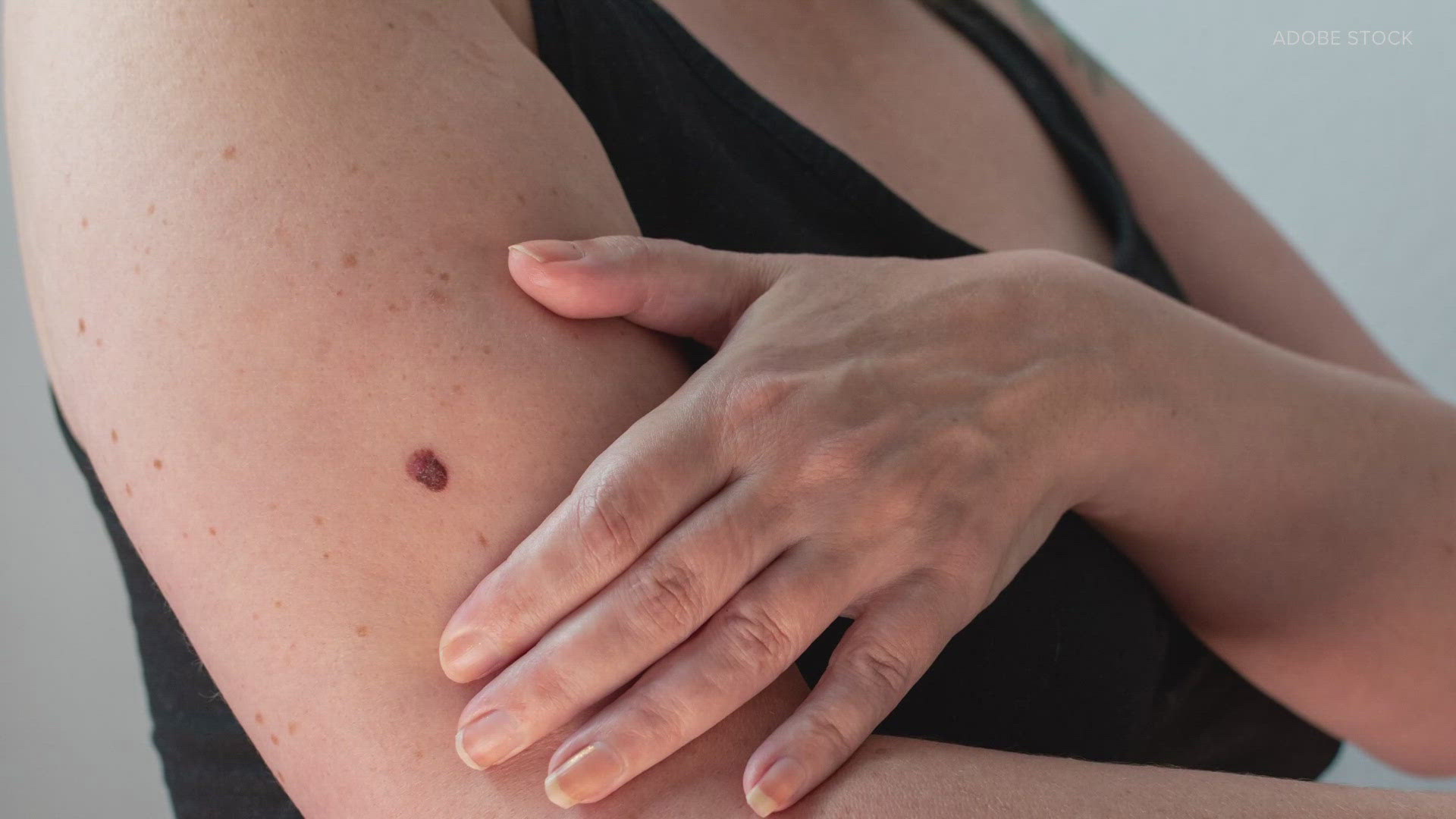SEATTLE — The sun will be shining brightly this weekend but before you go outdoors, here's a reminder about the risk of skin cancer. Dermatologists say even a little sun exposure can be harmful.
"We are seeing increased rates of skin cancer throughout the country but also in Washington specifically," said Dr. Lindsay Gunnell, a dermatologist with a background in skin oncology at the Fred Hutchinson Cancer Center.
She said roughly 80 percent of UV rays can still seep through cloud cover.
"That's a generalization of course, it depends on how thick the cloud cover is and how much of it there is, but I think people just don't believe that they need any kind of sun protection," Gunnell said.
Gunnell also pointed out that skin cancer rates have gone up in recent years. CDC data shows a 120 percent increase in melanoma cases in the U.S. from 1999 to 2021.
In 2020, Washington ranked among the top 18 states for skin cancer cases in the U.S.
"I think one of the reasons we are seeing that in Washington is because there's a false sense of security here with our cloud cover that we're getting protection, that we're not getting," Gunnell said.
She said getting burned from even one day out in the bright sun can be harmful.
"Melanoma and basal cell skin cancer specifically are more likely to happen for people who have intense, intermittent sun exposure, as opposed to chronic, low levels, or even high levels of sun exposure," Gunnell said.
Skin cancer becomes dangerous, even deadly if it metastasizes into other organs like the lungs and brain.
"Skin cancer can infiltrate into the blood system that is part of your skin, and then the blood can take it everywhere in your body," Gunnell explained.
Gunnell pointed to what dermatologists call, the ABCDEs of melanoma to detect suspicious moles vs. normal ones.
A is for "asymmetry."
"So if you can't cut that mole in half on both sides, that's a problem," Gunnell said.
B is for "border," meaning moles with irregular edges should be checked out. C is for "color."
"It may be just a compound mole with two colors, but it might be indicative of melanoma or something more worrisome," she said.
D is for "diameter" of 6 millimeters or greater, which is the size of a pencil eraser.
E is for "evolution," which Gunnell said is one of the important factors.
"A cancer basically isn't a cancer unless it's growing and evolving. And if you see something changing, even if it seems otherwise harmless to you, it's a good idea to get it checked out," Gunnell said.
Dermatologists say protection is key, with regular application of sunscreen.
As for vitamin D absorption, Gunnell said sufficient vitamin D can be obtained through diet and supplements, in addition to the sun, given SPF is still applied.
"You need UVB rays to absorb vitamin D and sunscreens do protect against UVB. That said, you need very little sun to produce vitamin D in the skin and most sunscreens are not protecting perfectly," Gunnell said.
Gunnell said SPF can still provide a high percentage of sun protection and remains one of the most recommended ways to protect the skin if you're out in the sun. She said adding additional "layers" such as a hat and clothing are highly effective.
What to know about skin cancer risks: HealthLink
What type of mole is suspicious? Is a little bit of sun exposure OK? What about vitamin D absorption? A Fred Hutch dermatologist weighs in.

